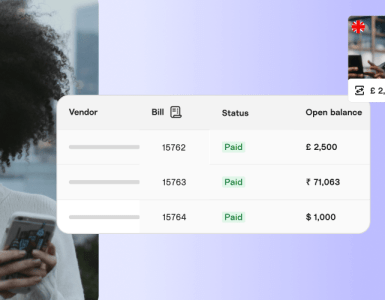You’ve decided to start a freelance business and if you think you can just “take it as it comes”, you’re mistaken. The first thing you should do is write a business plan.
Even though business plans might seem tedious to write, they are an important part of starting a business because they provide direction and drive growth.
“It’s a tool for understanding how your business is put together. You can use it to monitor progress, hold yourself accountable, and control the business’s fate,” states an Entrepreneur article, while emphasizing the importance of having a business plan.
5 Visuals You Must Include In Your Freelance Business Plan
Whether you’re creating a business plan for internal purposes or to attract investors, you should consider using visuals to design one that engages readers and inspires action.
Let’s take a look at five visuals you must include in your freelance business plan to communicate better and keep readers invested.
1. Present your target clients with persona guides
When you’re just starting out, it’s common to think you’ll take every client that comes your way. In the process, you end up wasting time on clients you should be avoiding or taking projects that are not your specialty.
The right way to go about it is to define an ideal client. This will help you focus your efforts and attract the right type of clients.
Start with developing detailed personas of your target client. You can consider aspects such as their:
- Demographics
- Location
- Income level
- Occupation
- Motivations and goals
- Pain points
It’s a good idea to present this information visually in the form of a persona guide. This will give you a better understanding of the kind of clients you need to target.
Here’s an example of a persona guide. It paints a clear picture of the ideal client while including all the essential elements to guide your marketing and growth strategies.
2. Differentiate yourself with a SWOT matrix
No business plan is complete without a competitive analysis. After all, how will you differentiate your freelance business if you don’t know who your competitors are?
Take a moment to evaluate the industry, identify your competitors, and assess their strengths and weaknesses.
You can use LinkedIn and freelance marketplaces to find other freelancers in your niche to see the kind of clients they’re working with and what they’re doing right.
It’s a good idea to summarize your findings in a SWOT analysis:
- Strengths: What are you doing well?
- Weaknesses: Where are you struggling?
- Opportunities: Are there any gaps in the market you could address?
- Threats: What are your competitors doing well?
Use a SWOT matrix to present this information and get a clearer picture of where you fit in the competitive landscape.
Here’s an example of a SWOT analysis matrix you can use. It clearly presents the four quadrants and lists the findings in bullet points.
3. Introduce your team with an organizational chart
We can all agree that people make the business which is why you should present your team structure in your freelance business plan.
It doesn’t matter if you have a small team. What’s important is showcasing the different people involved while highlighting their individual responsibilities.
The best way to present this information is by using an organizational chart. Not only does it give a better understanding of the team structure to internal and external parties but it also helps you identify skill gaps as your business expands.
Here’s an example of a simple organizational chart template for businesses with little or no middle management or supervisory roles. One glance at it is enough to understand how the company is structured.
4. Create a roadmap to communicate marketing strategy
Now that you’ve set the foundation for your freelance business, you need to talk about how you plan to market and grow it.
The thing about strategy communication is that it tends to get complicated owing to the number of layers involved. The question is: how do you communicate strategy without overwhelming readers?
A visual tactic you can use is creating a marketing roadmap to explain your long-term marketing strategy. Start by listing down your small business marketing ideas such as creating a website, starting a blog, developing lead magnets, building a social media presence, podcasting, etc.
You can then rank them as per priority, categorize them into different months, and set measurable goals for each quarter. This organized way of working helps you track progress while improving team communication.
Here’s an example of a marketing roadmap. Notice how it mentions the focus areas for every month in a straightforward and visual manner.
5. Outline budget allocation with a flowchart
The good news is that most freelance businesses don’t require much initial capital. However, this doesn’t mean you overlook the financial section of your business plan.
It’s important to create a business budget that takes into account your business’ finances along with the fixed and variable costs you will incur. This helps you streamline finances, manage spends, and work towards meeting your financial goals.
One good way to present budget allocation is by using a flowchart. It lets you break it down into smaller spending categories, making it easier for people to get a quicker overview.
Here’s an example of a flowchart that visualizes the breakdown of a budget. It uses icons to represent every category and make the information easily identifiable:
The Takeaway: Design An Engaging Freelance Business Plan
Every business needs a strong business plan to thrive and sustain.
Considering the amount of complex information that goes into them, using these five visuals will help you design a freelance business plan that is not only pleasing to the eye but is also functional in its communication.








